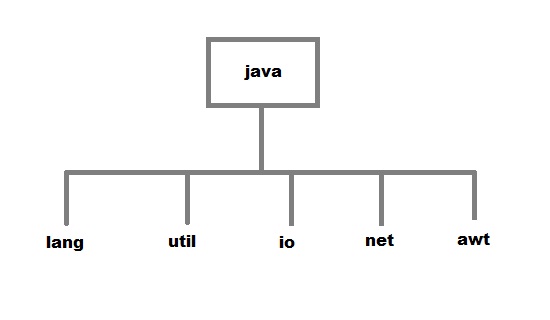Java Package
Package are used in Java, in-order to avoid name conflicts and to control access of class, interface and enumeration etc. A package can be defined as a group of similar types of classes, interface, enumeration and sub-package. Using package it becomes easier to locate the related classes.
Package are categorized into two forms
- Built-in Package:-Existing Java package for example
java.lang,java.utiletc. - User-defined-package:- Java package created by user to categorized classes and interface

Creating a package
Creating a package in java is quite easy. Simply include a package command followed by name of the package as the first statement in java source file.
package mypack;
public class employee
{
...statement;
}
The above statement create a package called mypack.
Java uses file system directory to store package. For example the .class for any classes you to define to be part of mypack package must be stored in a directory called mypack
Example of package creation
package mypack
class Book
{
String bookname;
String author;
Book(String b, String c)
{
this.bookname = b;
this.author = c;
}
public void show()
{
System.out.println(bookname+" "+ author);
}
}
class test
{
public static void main(String[] args)
{
Book bk = new Book("java","Herbert");
bk.show();
}
}
To run this program :
- create a directory under your current working development directory(i.e. JDK directory), name it as mypack.
- compile the source file
- Put the class file into the directory you have created.
- Execute the program from development directory.
NOTE : Development directory is the directory where your JDK is install.
Uses of java package
Package is a way to organize files in java, it is used when a project consists of multiple modules. It also helps resolve naming conflicts. Package's access level also allows you to protect data from being used by the non-authorized classes.
import keyword
import keyword is used to import built-in and user-defined packages into your java source file. So that your class can refer to a class that is in another package by directly using its name.
There are 3 different ways to refer to class that is present in different package
- Using fully qualified name (But this is not a good practice.)
Example :
class MyDate extends java.util.Date { //statement; } - import the only class you want to use.
Example :
import java.util.Date; class MyDate extends Date { //statement. } - import all the classes from the particular package
Example :
import java.util.*; class MyDate extends Date { //statement; }
import statement is kept after the package statement.
Example :
package mypack; import java.util.*;
But if you are not creating any package then import statement will be the first statement of your java source file.
Static import
static import is a feature that expands the capabilities of import keyword. It is used to import static member of a class. We all know that static member are referred in association with its class name outside the class. Using static import, it is possible to refer to the static member directly without its class name. There are two general form of static import statement.
- The first form of static import statement, import only a single static member of a class
Syntax
import static package.class-name.static-member-name;
Example
import static java.lang.Math.sqrt; //importing static method sqrt of Math class
- The second form of static import statement,imports all the static member of a class
Syntax
import static package.class-type-name.*;
Example
import static java.lang.Math.*; //importing all static member of Math class
Example without using static import
public class Test
{
public static void main(String[] args)
{
System.out.println(Math.sqrt(144));
}
}
Output :
12
Example using static import
import static java.lang.Math.*;
public class Test
{
public static void main(String[] args)
{
System.out.println(sqrt(144));
}
}
Output :
12
